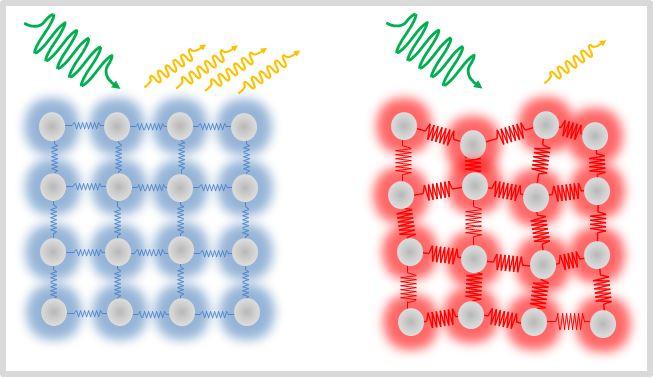
Credit: HZB
Interactions between electrons and phonons are regarded as the microscopic driving force behind ultrafast magnetization or demagnetization processes (spin-flips). However, it was not possible until now to observe such ultrafast processes in detail due to the absence of suitable methods.
Now, a team headed by Prof. Alexander Föhlisch has developed an original method to determine experimentally for the first time the electron-phonon driven spin-flip scattering rate in two model systems: ferromagnetic Nickel and nonmagnetic copper.
They used X-ray emission spectroscopy (XES) at BESSY II to do this. X-rays excited core electrons in the samples (Ni or Cu) to create the so-called core-holes, which were then filled by the decay of valence electrons. This decay results in the emission of light, which can then be detected and analyzed. The samples were measured at different temperatures to observe the effects of lattice vibrations (phonons) increasing from room temperature to 900 degrees Celsius.
As the temperature increased, ferromagnetic nickel showed a strong decrease in emissions. This observation fits well with the theoretical simulation of processes in the electronic band structure of nickel after excitations: by increasing the temperature and thus, the phonon population, the rate of scattering between electrons and phonons increases. Scattered electrons are no more available for decay, which results in a waning of the light emission. As expected, in the case of diamagnetic copper, the lattice vibrations had hardly any influence on the measured emissions.
“We believe that our article is of high interest not only to specialists in the fields of magnetism, electronic properties of solids and X-ray emission spectroscopy, but also to a broader readership curious about the latest developments in this dynamic field of research,” says Dr. Régis Decker, first author and postdoctoral scientist in the Föhlisch team. The method can also be used for the analysis of ultrafast spin flip processes in novel quantum materials such as graphene, superconductors or topological insulators.
###
Media Contact
Antonia Roetger
[email protected]
Original Source
https:/
Related Journal Article
http://dx.





